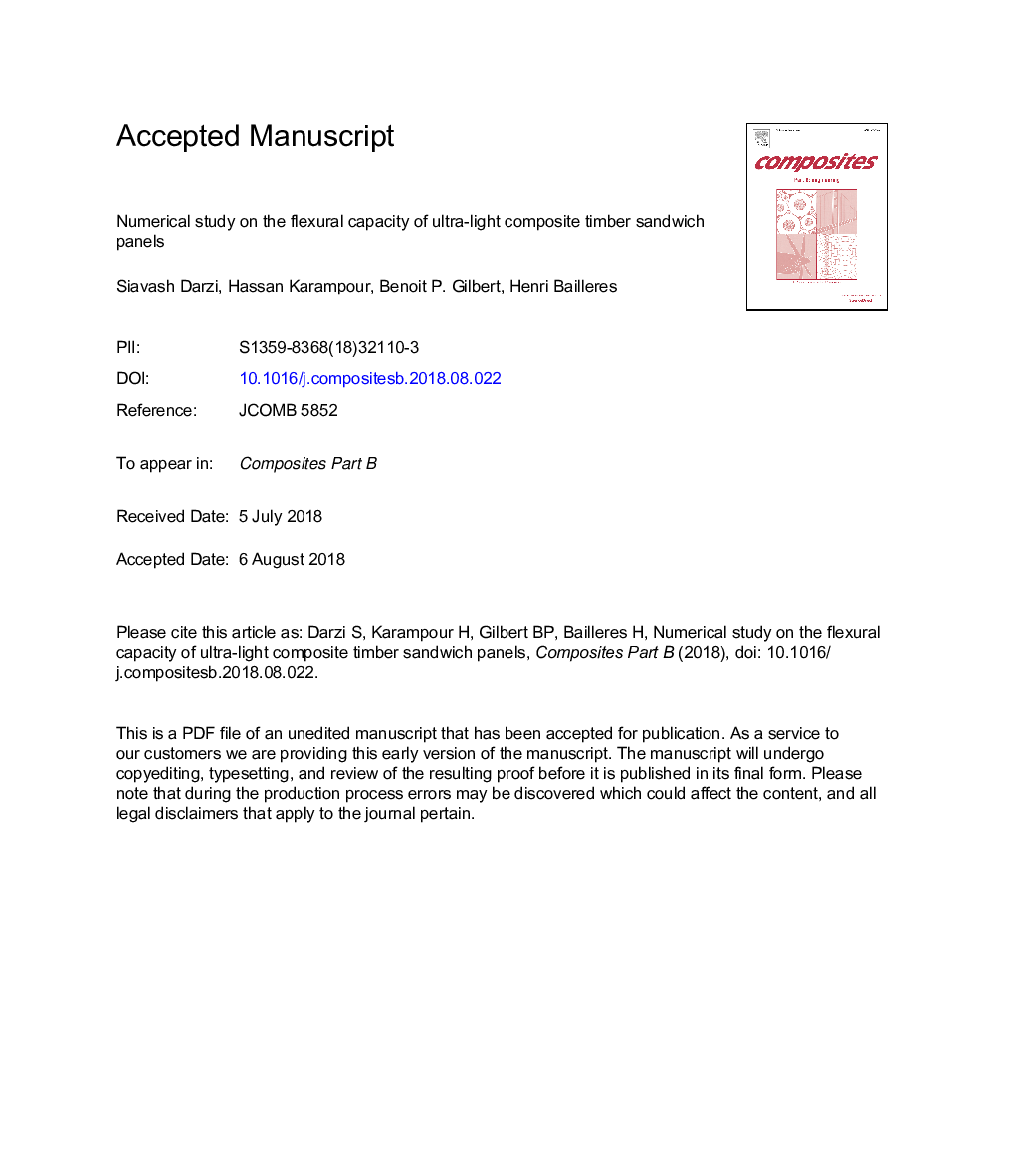| Article ID | Journal | Published Year | Pages | File Type |
|---|---|---|---|---|
| 11004176 | Composites Part B: Engineering | 2018 | 49 Pages |
Abstract
The flexural stiffness and ultimate load capacity of novel ultralight composite sandwich panels, made of plywood faces and bamboo or peeling cores are investigated herein. Modified Ritz method and sandwich beam theory formulations for composite sandwich panels with thick faces and thick/stiff cores are developed, and are used to find the bending stiffness of the panels in one-way and two-way bending. The ultimate capacity and failure modes of the panels are then predicted from nonlinear material and geometric finite element analyses (FEA). The numerical methods are validated against published experimental results of orthotropic composite sandwich panels. It is shown that at similar panel depths, the proposed composite timber panels can be as high as 15% stiffer and 40% lighter than the existing commercial cross-laminated timber (CLT) panels. Results of a parametric study on selected composite panels with different yield stresses in compression, show that panels with bamboo cores exhibit relatively more ductile behaviour compared to those with peeling cores. At the ultimate flexural capacity, the tensile face of the panels fails in tension parallel to the grain, while the compressive face almost reaches its yield capacity.
Related Topics
Physical Sciences and Engineering
Engineering
Engineering (General)
Authors
Siavash Darzi, Hassan Karampour, Benoit P. Gilbert, Henri Bailleres,
